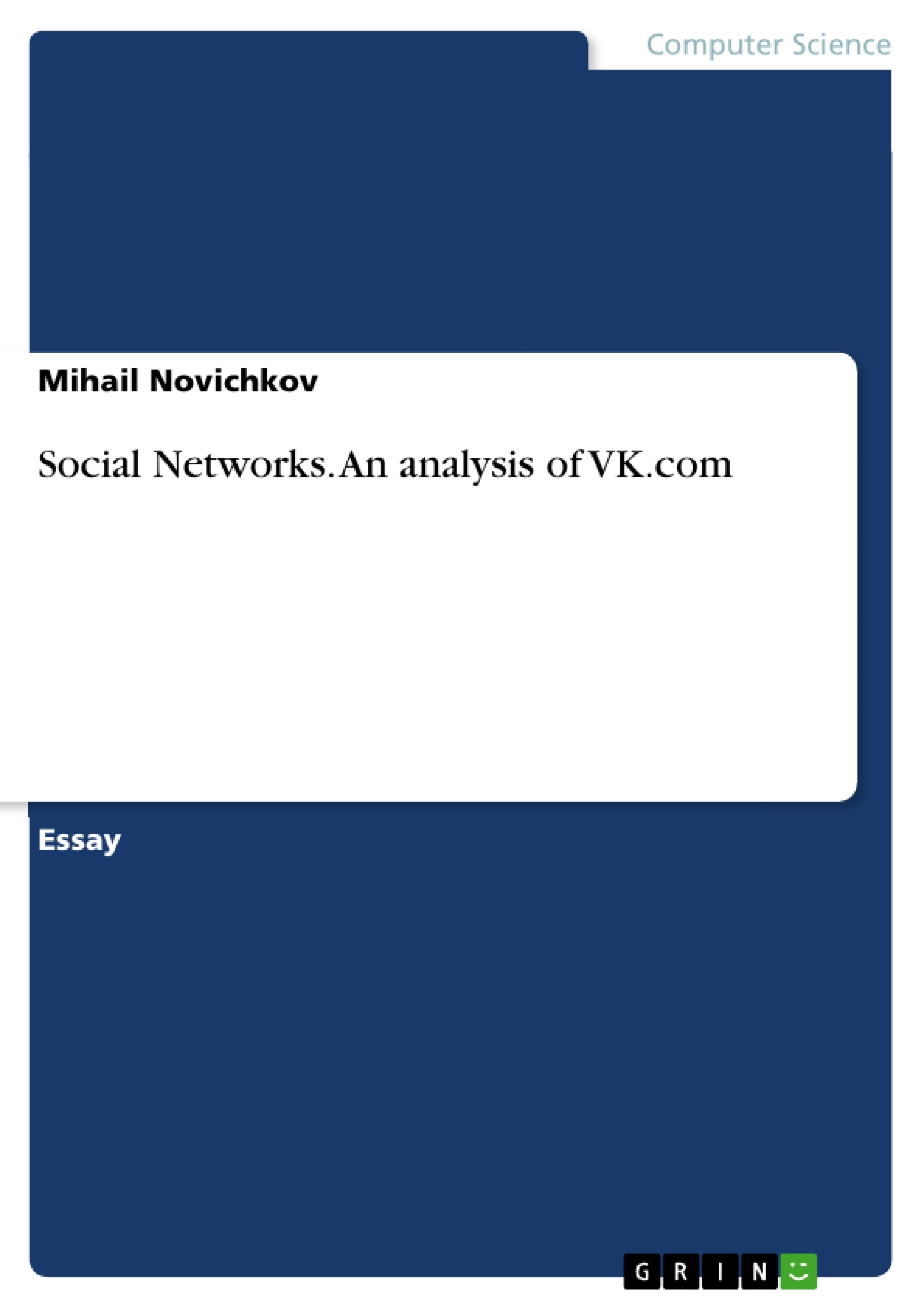This text describes the performance of a software to extract features out of the textual informations from the walls of social network users and to group them by their interests. Furthermore, it gives possible applications of this software for advertisement and databases in social networks.
From the text:
-Theory;
-Test run;
-Run on a real network user
Inhaltsverzeichnis (Table of Contents)
- Theory
- Introduction to the work:
- Approximations and idea of the study:
- The texts source:
- The texts preprocessing:
- Topic model development:
- The clustering algorithm:
- The problem of unknown number of clusters:
- Test run
- Run on a real network user
Zielsetzung und Themenschwerpunkte (Objectives and Key Themes)
The objective of this work is to develop a theory and software for extracting features from text information on social network user walls and subsequently group these users based on their interests.
- Analyzing user behavior and interests through social network wall content
- Developing a topic model to categorize users based on their interests
- Utilizing text analysis techniques to extract features from social network data
- Exploring applications of this analysis in areas such as advertising, information diffusion prediction, and user database creation
- Addressing the challenges of text preprocessing in the context of social network data
Zusammenfassung der Kapitel (Chapter Summaries)
- Theory: This chapter introduces the concept of analyzing user behavior and interests through social network wall content. It outlines the approximations and theoretical framework of the study, including the use of topic modeling and text preprocessing techniques. The chapter also discusses the choice of regularizers and clustering algorithms.
- Test run: This chapter likely describes the implementation and results of a test run of the developed software, demonstrating its ability to extract features and group users based on their interests.
- Run on a real network user: This chapter explores the application of the developed software to a real social network user, showcasing its effectiveness in analyzing actual user data and identifying their interests.
Schlüsselwörter (Keywords)
Social network analysis, topic modeling, text analysis, user behavior, interest categorization, text preprocessing, social media data, BigARTM, sparseness hypothesis, clustering algorithms, Ward's hierarchical algorithm, uniformity testing, multivariate data analysis.
- Citation du texte
- Mihail Novichkov (Auteur), 2016, Social Networks. An analysis of VK.com, Munich, GRIN Verlag, https://www.grin.com/document/340983



